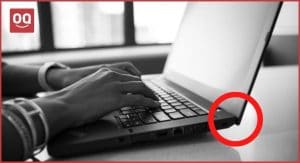In today’s business world, data security is more important than ever. With sensitive information being stored on computers and mobile devices, it’s vital to have a reliable way to protect it. That’s where McAfee Endpoint Encryption comes in. By encrypting data at the endpoint (the device where it originates), McAfee Endpoint Encryption provides an extra layer of security.
Several laptop manufacturers pre-install McAfee Endpoint Encryption on their machines. However, if you no longer need this security measure or are experiencing problems with it, you may wonder how to remove McAfee Endpoint Encryption from your laptop.
In this article, we’ll show you the step-by-step process for removing McAfee Endpoint Encryption from your laptop. So, make sure you read the article to the end.
Before moving on to the main section, let’s first answer the question, “What is McAfee Endpoint Encryption?”
In short, McAfee Endpoint Encryption is software created by the McAfee company that helps protect your data by encrypting it. When data is encrypted, it is turned into a code that can only be deciphered by someone with the proper key. This makes it much more difficult for someone to access your data if they are not supposed to.
In addition, the program can also wipe the data from the device if it is lost or stolen, preventing it from falling into the wrong hands. As a result, McAfee Endpoint Encryption is an essential tool for businesses that need to protect their data from unauthorized access.
How to remove McAfee Endpoint Encryption from laptop?
The process is actually fairly simple, and we’ll walk you through it step-by-step below.
Step 1: Start by logging into your laptop as an administrator. This will give you the necessary rights to remove the program.
Step 2: Next, open the Control Panel. To open it, click on “Start” and then select “Control Panel.” The Control Panel is where you can find and change the settings for many of the features on your computer.
Step 3: Control Panel is divided into different categories, which you can access by clicking on the links in the left column. Choose “Programs” from the options.
Step 4: In the “Programs” category, select “Uninstall a Program.” This will bring up a list of all the programs currently installed on your computer.
Step 5: Find McAfee Endpoint Encryption in the list and click on it once. Then, click on the “Uninstall” button at the top of the list.
Step 6: A dialog box will appear, asking if you are sure you want to uninstall the program. Click on “Yes” to confirm, and the uninstall process will begin.
Step 7: Once the uninstall process is complete, restart your computer, and the program will be completely removed from your system.
Also Read: How to Remove LoJack from Laptop?
How to disable McAfee Endpoint Encryption for USB drive?
Users with McAfee Endpoint Encryption installed on their laptops know that it encrypts all USB drives connected to the computer by default. This is a great feature for security and privacy, as it helps to prevent data breaches and unauthorized access to sensitive information.
However, this feature can be really annoying for some users who just want to use a USB drive for simple storage purposes without having to go through the hassle of encrypting and decrypting the data every time.
Fortunately, there is a way to disable the encryption for USB drives on a McAfee Endpoint Encryption-protected computer. Here’s how:
1) Press the Windows key + R on your keyboard to open Run or click on Start, then type “run” into the search box and press Enter.
2) Type “msconfig.exe” in the Run command window and press Enter. This will take you to the System Configuration.
3) Click on the “StartUp” tab in the System Configuration window. You will see a list of programs set to run automatically when Windows starts up.
4) Find “McAfee Endpoint Encryption for USB” or anything that starts with “McAfee” in the list and uncheck the box next to it.
5) Click on “Apply” and then “OK” to save the changes.
6) Reboot your computer for the changes to take effect.
And that’s it! After following these steps, McAfee Endpoint Encryption will no longer automatically encrypt your USB drives. However, please note that this does not mean that your USB drives are no longer vulnerable to being encrypted by other means- they just won’t be automatically encrypted by McAfee.
Can you remove McAfee Endpoint Encryption without password?
Unfortunately, you cannot remove McAfee Endpoint encryption without the password. You need to contact your administrator to obtain the password or remove the encryption.
This can be frustrating if you’ve forgotten your password or if you no longer have access to the account that was used to set up the encryption. However, you can try contacting customer support for help. They may be able to reset your password or provide you with other options for accessing your data.
Conclusion
McAfee Endpoint Encryption is a great security tool that can help to protect your data from unauthorized access and theft. It is a very user-friendly program that is easy to install and use. It provides a high level of security for your data and helps ensure that your information is always protected.
But, there are situations where you may want to remove the program from your computer. For example, if you forget your password or if you no longer need encryption for your data. Thankfully, there is a way to uninstall McAfee Endpoint Encryption from your system. Just follow the steps in this article, and you’ll be able to remove the program in no time.
Hopefully, this article has helped you to understand how to remove McAfee Endpoint Encryption from laptop. If you have any questions or if you need help with anything, feel free to leave a comment below, and we’ll do our best to help you out.
Thanks for being with us 🙂





